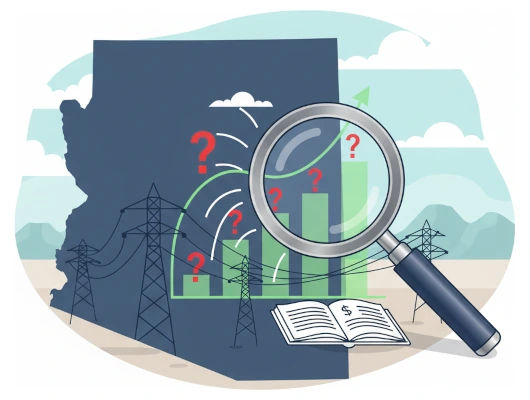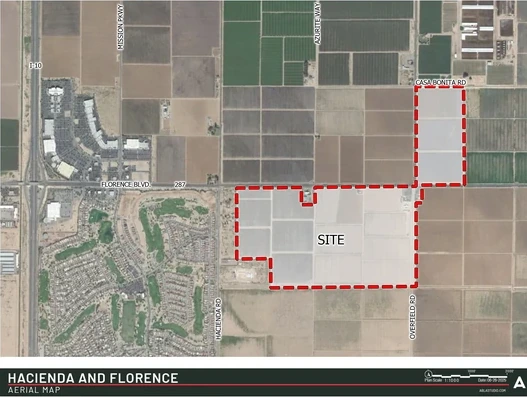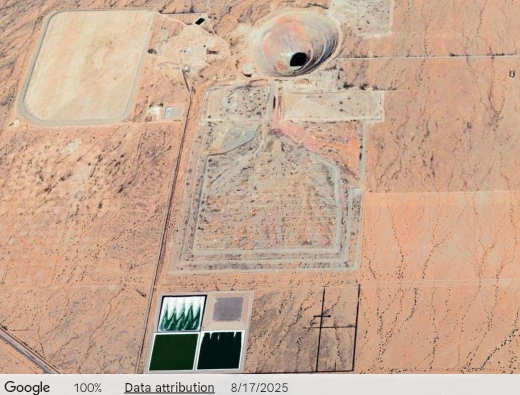Council votes 7-0 to advance industrial development with energy storage facility
The Florence Town Council unanimously approved two key ordinances August 5th that will pave the way for the LightHorse Energy Storage project, a 400-megawatt battery energy storage system capable of powering approximately 200,000 homes during an eight-hour peak load period.
The council voted 7-0 to adopt both a minor general plan amendment changing the 40.93-acre site from suburban neighborhood to industrial designation while preserving open space along the CAP canal, and a major amendment to the Dobson Farms Planned Unit Development allowing battery energy storage systems as permitted uses.
Community Development Director A.J. Monroe outlined the significance of the decision before the vote, explaining that a no vote would keep the area as suburban neighborhood, while a yes vote would change it to industrial land use under the 2022 general plan.
The council voted yes, positioning northern Florence for continued industrial expansion. Monroe emphasized how infrastructure investments support this transformation: “Ongoing utility infrastructure investments by SRPs and partners, and the proposed large-scale transportation infrastructure projects of the state and the county prime the northern sections of Florence for industrial development.” As detailed in our broader coverage of the area’s industrial transition, this approval represents part of a coordinated shift toward industrial uses along the developing transportation and energy corridor.
Project Details and Location
The Rose Law Group submitted the application on behalf of esVolta Development LLC for the large-scale battery energy storage system. The project site sits east of Attaway Road and south of Judd Road, strategically positioned next to Salt River Project’s existing substation to minimize required transmission infrastructure.
The facility will consist of battery storage units housed in 8-to-10-foot tall enclosures arranged in rows on concrete pads. A private substation in the northwest corner will connect directly to SRP’s grid through underground transmission lines, minimizing the length of the required gen-tie transmission line. Two gated access drives from Judd Road will provide emergency and maintenance vehicle circulation throughout the site.
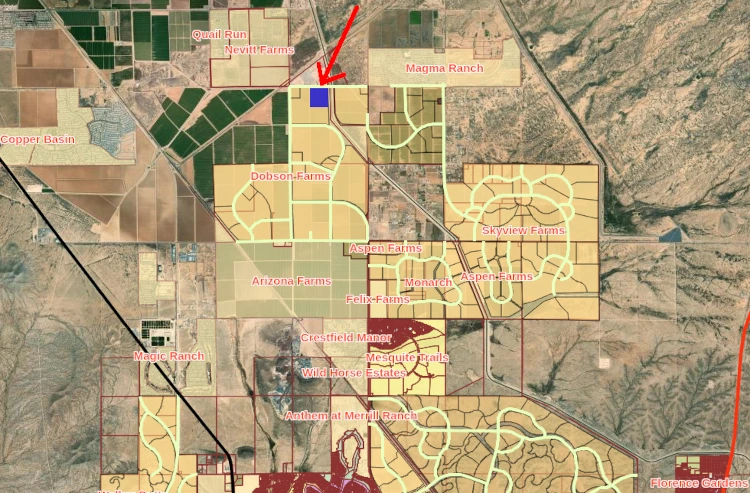
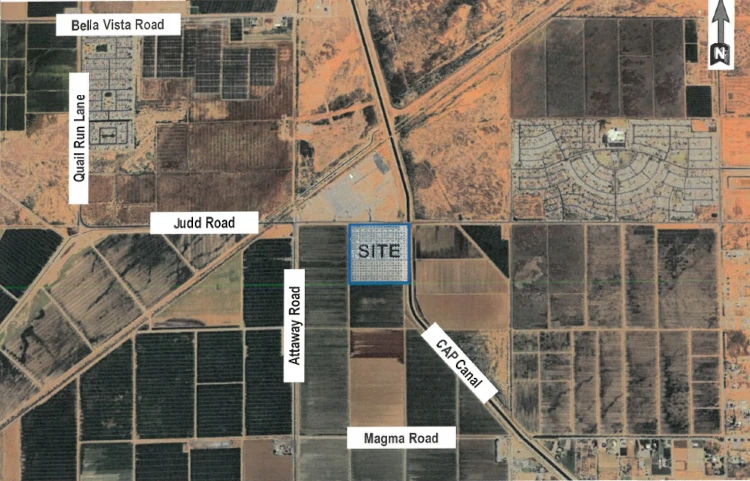
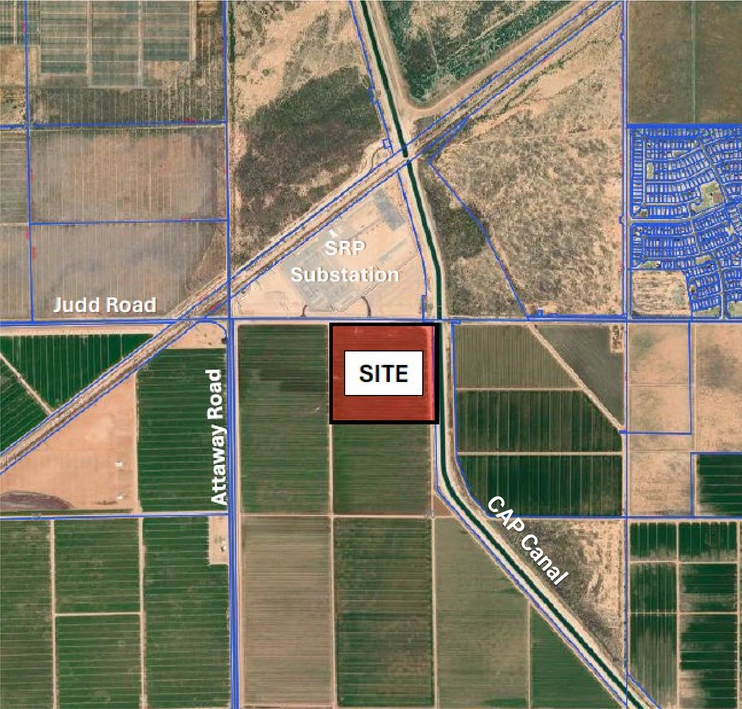
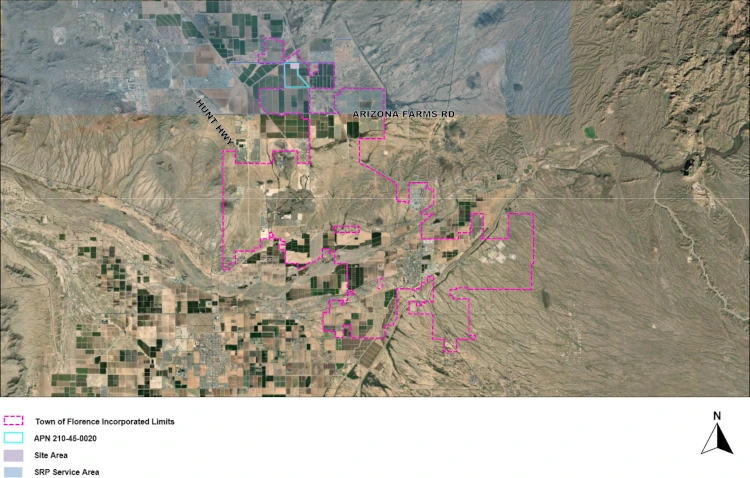
Councilmember Tony Bencina emphasized the project addresses critical grid reliability needs, particularly as artificial intelligence and summer heat waves drive unprecedented electricity demand.
Grid Stability and Revenue Benefits
Jon Gillespie of Rose Law Group, representing the applicant, described how battery energy storage systems provide essential grid stability by storing excess power when generated and redistributing it during peak demand periods, typically in evening hours.
The project will generate significant revenue streams for Florence. According to projections provided by the applicant, esVolta estimates $1.5 million in property tax revenue for the town, $4.5 million for Florence Unified School District, and $10.4 million for Pinal County and other taxing districts over the 20-year project life. The company will also pay approximately $350,000 in development impact fees.
Industrial Corridor Development
As detailed in our companion coverage of the industrial transition, the LightHorse project is part of a broader transformation reshaping northern Florence’s development patterns.
Community Development Director A.J. Monroe provided important context during his prelude to the presentation, addressing key questions from the 2022 General Plan review criteria.
“The staff finds that the minor general plan amendment shows that the industrial place type, which would allow for that battery energy storage solutions system or BESS, is more appropriate than the suburban neighborhood classification,” Monroe said.
Monroe emphasized how infrastructure investments position the area for industrial growth: “Ongoing utility infrastructure investments by SRPs and partners, and the proposed large-scale transportation infrastructure projects of the state and the county prime the northern sections of Florence for industrial development.”
The site is surrounded by existing and planned industrial uses, including industrial zoning to the west, solar development, battery energy storage, a gas plant, and the SRP substation to the north. Jon Gillespie of Rose Law Group noted during the council meeting that no existing or planned homes are located within 1,500 feet of the site. The Florence Tech Park application for adjacent properties seeks similar commercial-industrial designation.

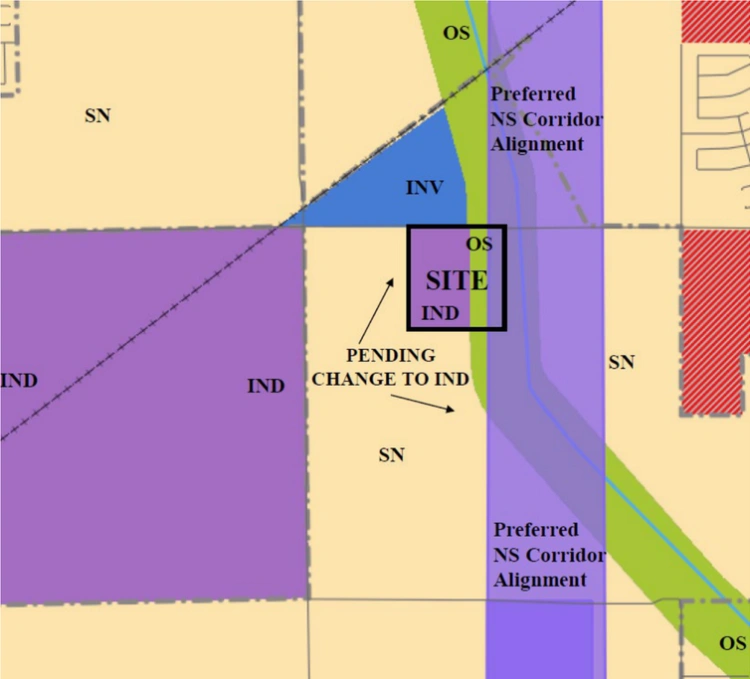
Monroe noted a timing concern with this minor amendment proceeding before major general plan amendments expected in the coming months. “In the coming months, what you’ll be hearing from adjacent property owners are major general plan amendments seeking the same industrial place type,” he said.
The surrounding properties to the west and south remain designated as suburban neighborhood in the current general plan, though the applicant has proposed a 100-foot setback from property lines to battery storage units to address potential compatibility issues while anticipating future industrial rezoning of adjacent areas.
Planning Commission Input
The project received thorough review from the Planning and Zoning Commission, which recommended approval with a 4-0 vote after a June 5 public hearing. Planning commissioners raised questions about battery materials, emergency service access, fire response protocols, retention pond design, property boundaries relative to the CAP canal, and potential future expansion.
Fire Safety and Community Concerns
Safety dominated much of the public discussion. Melissa Cordero, an Air Force veteran and Arizona lead organizer with Veterans Power America, spoke in support of the project, drawing on military experience with battery storage systems in challenging environments.
Florence resident Kathy Lehman raised multiple concerns opposing the project, questioning why battery storage wasn’t included in original solar applications for the area, expressing concerns about perimeter landscaping requirements, and asking whether residents would benefit from lower energy bills. She also worried about the fire department’s response capabilities and potential for fires to spread in the windy area.
Florence Fire Chief Mitch Snyder confirmed the department’s readiness to handle battery fires, noting the department had met with the applicant to review plans and emergency protocols. Snyder confirmed that water remains the primary firefighting tool for these facilities. The project includes esVolta providing specialized training to the Florence Fire Department on battery storage emergency response. Gillespie explained that esVolta “provides specific training opportunities for your personnel to make sure that they are completely on board, understand how to handle a fire like that.”
Jon Gillespie addressed fire concerns by noting esVolta track record: “Since 2017, they haven’t had any fires” as a company operating battery storage facilities. “And the technology’s only gotten better.” He explained that each battery container includes self-contained fire suppression systems designed to prevent propagation to adjacent units.
Updated Safety Codes
Mayor Keith Eaton highlighted the town’s proactive approach to battery storage safety. “If you will remember in the spring, knowing that we had the possibility of future battery storage, we passed the most current ICC codes. The 2024 codes, we’ve attached it to our 2018 codes in reference to this whole section of battery storage.”
The mayor emphasized the importance of being proactive: “This was something that we talked about that was very important for us to be proactive, that we’re not being reactive to something.”
Eaton also addressed how the planned North-South Corridor (SR 505) is reshaping development patterns. “The 505 is changing a lot of the landscape along there,” Eaton said, explaining that developers are now choosing industrial uses over residential development that would sit against a future freeway.
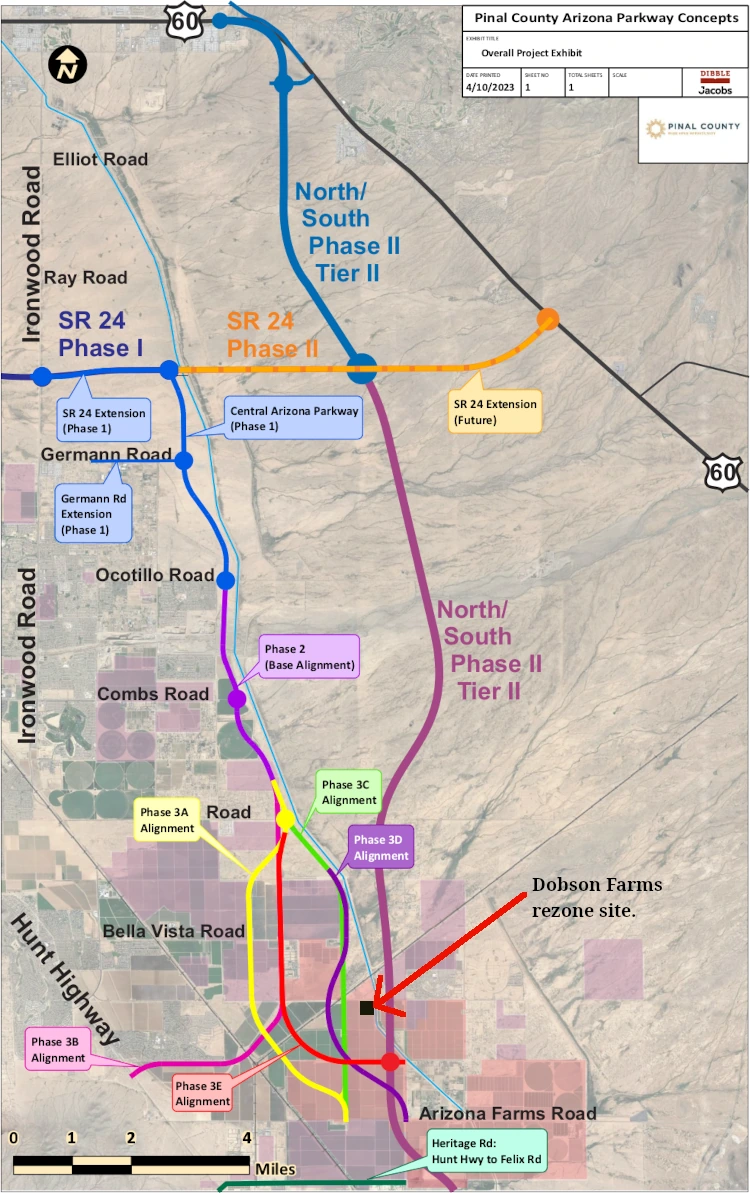
Council Deliberation
Councilmember Jose Maldonado connected the project to recent community discussions: “This kind of ties into myself and Council Member Bencina when we went over to Florence Gardens a couple weeks ago, and one of the questions our residents were like, ‘What can you do about SCIP?’ So this is it right here. It’s so much better to be proactive rather than reactive, like SCIP.” SCIP refers to the San Carlos Irrigation Project, which provides electricity for the region.
Councilmember Nicole Buccellato initially opposed the project but changed her position after researching the technology and consulting with town staff. “I was a big no in the beginning. After seeing the news, research, just kinda looking at things” about battery fires and safety concerns, “it kind of leads you in one direction,” she said, referring to initial negative coverage.
Buccellato expressed her primary concern: “What concerns me more is the safety of our citizens than any type of revenue that we’re ever gonna pull in in this town.” She noted that her initial research found there had been 30 thermal runaway fires in battery storage systems worldwide, emphasizing “not nationwide, worldwide.” After consulting with Fire Chief Snyder about the department’s capabilities, she felt comfortable with the safety measures.
Councilmember Arthur Neal remained uncertain until the final vote, citing revenue concerns and mixed information from his research. Neal acknowledged he wasn’t confident about the technology but focused on the town’s perspective. “I come from more of a town’s point of view. I’ve had people terrified of it, coming and asking me questions,” Neal said. He ultimately voted yes based on the revenue the project would generate.
Vice Mayor Adams emphasized the broader energy needs: “Look, we are in a horrific heatwave. We need power. Artificial intelligence sucks power. So if the State of Arizona wants to stay competitive and Pinal County wants to be at the top of that growth, we have to have power.”
Development Standards and Timeline
The approved ordinance establishes specific development standards for battery energy storage systems, including the 100-foot setback suggested by the applicant. Monroe noted this setback could become a standard for future projects.
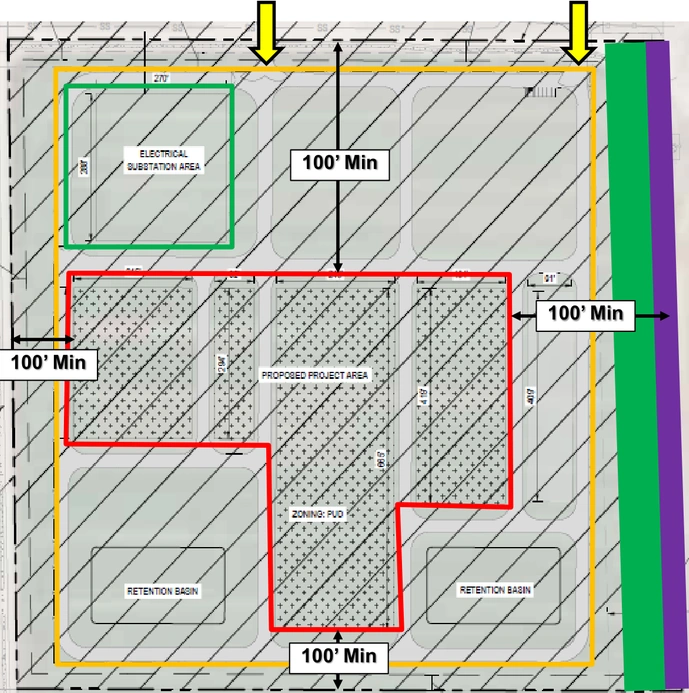
According to the applicant’s timeline presented to the council, construction will begin in 2028 with pad installation and the facility will come online by 2030. The project requires minimal ongoing staffing, with only periodic maintenance visits generating minimal traffic impact.
Road Infrastructure Questions
Mayor Eaton raised questions about road improvements, noting resident concerns about development impacts on local streets. Community Development Director Monroe explained that half-width road improvements would typically be required as part of the site plan approval process, though the traffic impact study did not require them for this specific project because “this project will not generate additional traffic.” Monroe noted that specific details would be determined during design review.
The mayor emphasized that while this project generates minimal traffic, the town expects developers to contribute their fair share to infrastructure improvements.
Regional Context
The LightHorse project represents the first major industrial development in what officials expect to become a broader transformation of northern Florence. As covered in our analysis of this industrial transition, multiple applications for similar industrial designations are pending, reflecting market demand driven by planned transportation infrastructure including the North-South Corridor and Central Arizona Parkway.
The project aligns with planned infrastructure investments that position this area as an emerging industrial corridor, moving away from residential development that would conflict with future transportation projects.
The approval sets the stage for additional battery storage and industrial projects as Florence adapts its land use planning to support economic diversification and address regional energy infrastructure needs. esVolta will now proceed through design review and site plan approval processes before beginning construction in the coming years.

